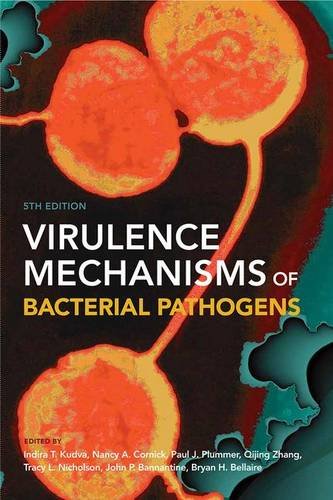

Most ebook files are in PDF format, so you can easily read them using various software such as Foxit Reader or directly on the Google Chrome browser.
Some ebook files are released by publishers in other formats such as .awz, .mobi, .epub, .fb2, etc. You may need to install specific software to read these formats on mobile/PC, such as Calibre.
Please read the tutorial at this link: https://ebookbell.com/faq
We offer FREE conversion to the popular formats you request; however, this may take some time. Therefore, right after payment, please email us, and we will try to provide the service as quickly as possible.
For some exceptional file formats or broken links (if any), please refrain from opening any disputes. Instead, email us first, and we will try to assist within a maximum of 6 hours.
EbookBell Team

0.0
0 reviewsGround-breaking overview of an enduring topic
Despite the use of antibiotics, bacterial diseases continue to be a critical issue in public health, and bacterial pathogenesis remains a tantalizing problem for research microbiologists. This new edition of Virulence Mechanisms of Bacterial Pathogens broadly covers the knowledge base surrounding this topic and presents recently unraveled bacterial virulence strategies and cutting-edge therapies.
A team of editors, led by USDA scientist Indira Kudva, compiled perspectives from experts to explain the wide variety of mechanisms through which bacterial pathogens cause disease: the host interface, host cell enslavement, and bacterial communication, secretion, defenses, and persistence. A collection of reviews on targeted therapies rounds out the seven sections of this unique book. The new edition provides insights into some of the most recent advances in the area of bacterial pathogenesis, including
Written to promote discussion, extrapolation, exploration, and multidimensional thinking, Virulence Mechanisms of Bacterial Pathogens serves as a textbook for graduate courses on bacterial pathogenesis and a resource for specialists in bacterial pathogenicity, such as molecular biologists, physician scientists, infectious disease clinicians, dental scientists, veterinarians, molecular biologists, industry researchers, and technicians.